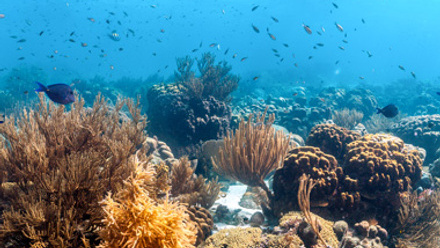March Highlights from the SETAC Journals
Helen Callow and Jen Lynch, SETAC
Pharmaceuticals and Personal Care Products in the Environment: What Have We Learned and Where Should We Go?
In 2011, the Pharmaceutical Interest Group of SETAC initiated a horizon-scanning exercise to identify the top research questions related to pharmaceuticals in the environment. Fourteen papers published in a special issue of Environmental Toxicology and Chemistry review the state of the science around the questions identified in the original exercise and look to the next 10 years. The guest editors, Alistair Boxall and Bryan Brooks, asked prominent researchers to review each of the 20 questions identified in the 2012 research and to explore progress and future priorities. Some questions include:
- Can nonanimal testing methods be developed that will provide equivalent or better hazard data compared with current in vivo methods?
- What approaches should be used to prioritize pharmaceuticals and personal care products for research on environmental and human health exposure and effects?
- Can cross-species extrapolation of biological data help guide environmental safety assessments?
- How can regions of risk be identified in the future?
- Do pharmaceuticals in the environment pose a risk to wildlife?
- Does environmental exposure to pharmaceutical and personal care product residues result in the selection of antimicrobial-resistant microorganisms, and is this important in terms of human health outcomes?
Integrating Global Climate Change into Ecological Risk Assessment: Strategies, Methods and Examples
In June 2022, a SETAC Pellston Workshop® was organized to explore novel approaches for incorporating climate change scenarios and global climate model projections into ecological risk assessments to help inform risk management and adaptation strategies. The workshop invited climate scientists and other experts from a range of disciplines, which contributed to the advancement of risk assessment methodology, for example, using climate model ensembles, different approaches to downscaling and further processing and use of climate information by statistical distributions. This month, five articles and a summary article published in a special section of Integrated Environmental Assessment and Management to cover the output from that workshop and provide guidance and case studies to help with integrating climate change into ecological risk assessments.
In one article, three case studies from Norway, Australia and the United States are used to show examples of quantification of climate change impacts on traditional risk assessment components such as chemical exposure and hazard, as well as on the vulnerability of assessment endpoints to other stressors.
Authors from another article present a Bayesian network (BN) model that allows the high-throughput incorporation of local climate projections into the environmental risk assessment of pesticides in aquatic ecosystems. A group from Australia developed a BN to explore how climate model projections can be incorporated into environmental risk assessment for a coral reef ecosystem, supported by adverse outcome pathways. Their case study demonstrates the potential of BNs to incorporate climate variables into ERAs to predict risks of combined stressors.
Rounding out the series, a case study on the risk to the Yakima River Chinook salmon population shows that climate change and its effects are important considerations in the management of the effects of contaminants to key endpoints.
The last article examines the environmental management cycles for chemicals and climate change framework (EMC4), which visualizes the commonalities of existing frameworks to communicate the intersections of risk assessment, risk management and implementation. The take-home message is that we are trying to manage a dynamic, open system and no one framework or policy will be the silver bullet; rather, a scaled and coordinated effort is needed to understand and explain the relationship between chemicals and climate change from a global to a local scale.
Author's contact: [email protected]



